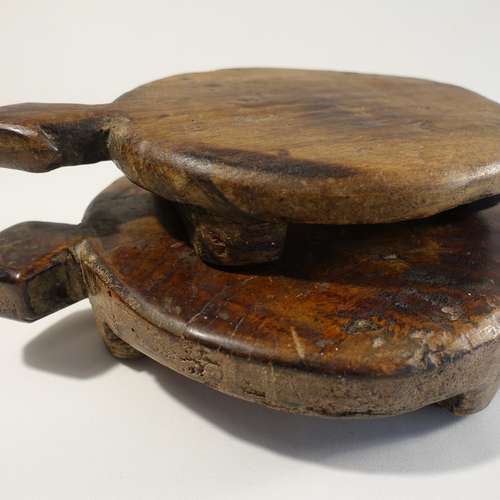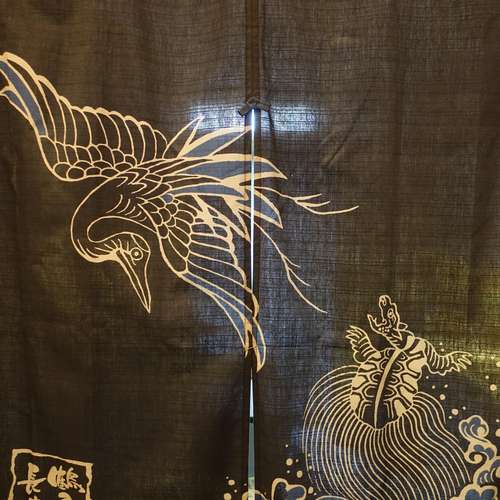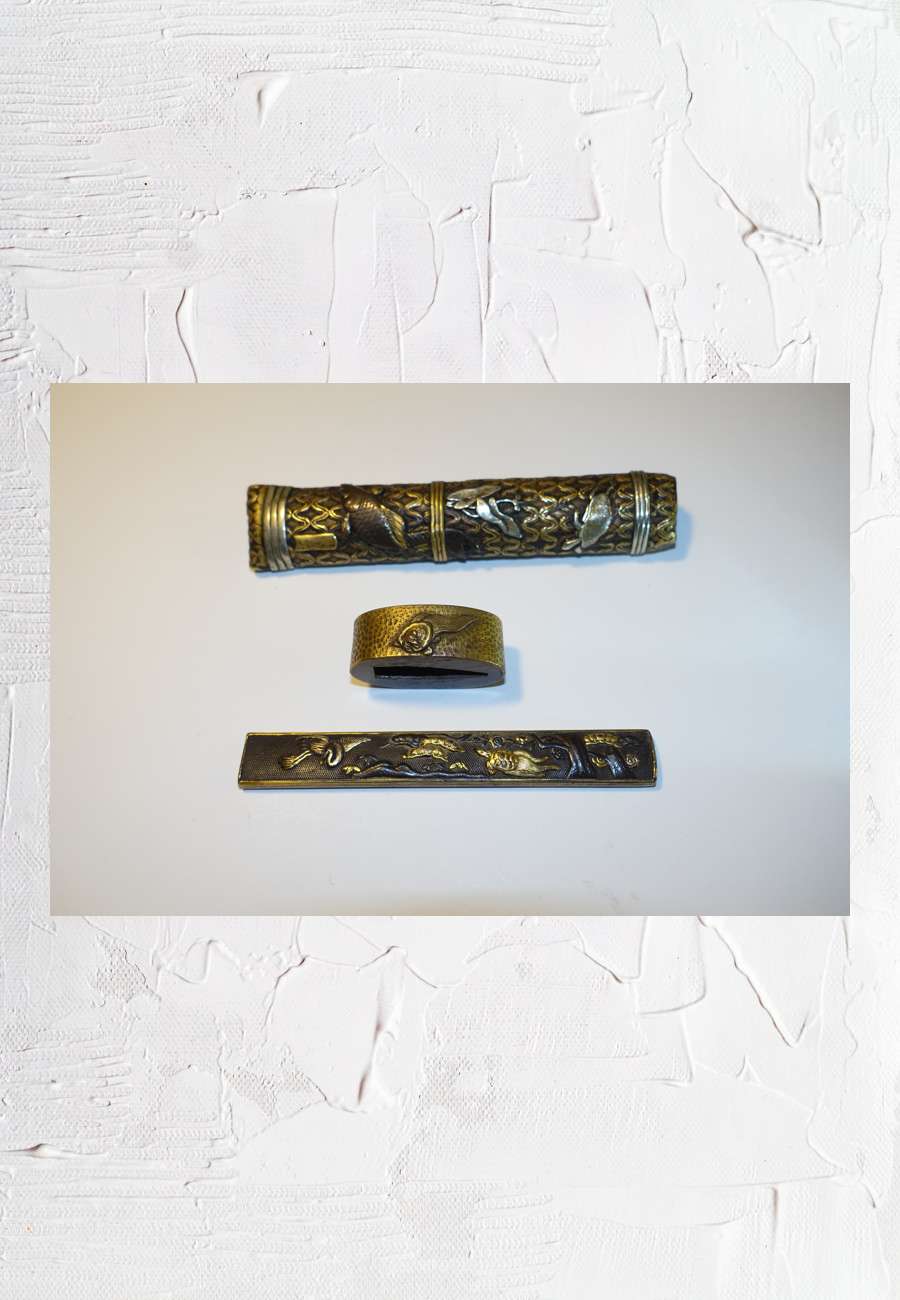Kozuka, name for Beesser from Samurai swords from Japan, which probably served as an all-purpose knife. They were specially provided for this purpose
In the sword stitch leaf (see Tsuba). During the Meiji period there was a ban on wearing swords. As a result, many were broken down because of their artistic design and sold as individual parts (see also: Menuki, Fuchi, Kozuka). Today, such parts, as often only the above handle, can be found in collections and museums (e.g. Grassi-Museum Leipzig / among others, also ethnology museum, with a focus on Asian art).
Above: alloy technology (shakondo) made of brass, copper, silver and gold, also a turtle on the back, sign., Meiji time around 1890, size 10.5 cm.
Below: the grip of another beesser, same alloy technology, with the symbols for happiness and a long life (crane, minogame, pine), around 1870, size 9 cm.
In the middle: a grip clamp, called Fuchi, also part of a samurai sword. This forms the end of the handle behind the Tsuba. The motif is the minogame (better recognizable in the magnification), material brass, size 3.4 cm.
[hint: this is an automatic translation from German]
| Category: Kultgegenstände
| Material: Metall
| Country of origin:
Japan
|
Similar pieces
 .
.
|
A visually similar exhibit of the collection is#5491 - folk arts |
 .
.
|
The object of the collection with nearest place of origin in Japan is #6086 - Commodities . |

